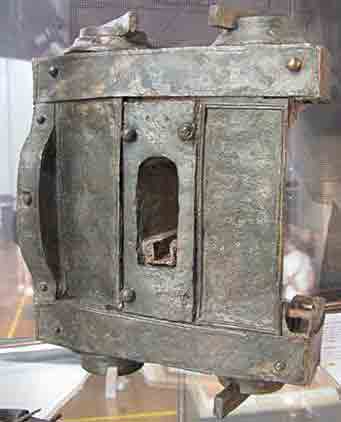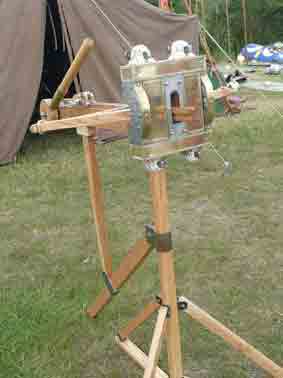The Xanten-Wardt Roman torsion catapult and catapult parts from Carlisle |
Alan Wilkins | |
The Xanten-Wardt frame from a Roman torsion bolt-shooting catapult of the 1st century AD was discovered in 1999 in a gravel quarry in north west Germany. The site was once an arm of the Rhine, but is now the Sudsee, a water-sport lake NNE of the Xanten Archaeological Park. The sumptuous official report on the find has now been published by Verlag Philipp von Zabern as Xanten Berichte Band 18: Die Fruhkaiserzeitliche Manuballista Aus Xanten-Wardt.
This exciting discovery has added far more to our understanding of these machines than previous finds of catapult frame parts from Ampurias, Caminreal and elsewhere. Not only has the metal plating survived, but for the first time the wood of the frame and the front end of the slider and stock have been preserved. The iron and bronze plating includes the battle shields for the spring-cord, organic material from which has been identified by electron microscope as sinew rope. The four bronze washers and washer-bars are there, with one complete washer pin and two broken ones.
 The Xanten-Wardt frame after conservation (Maarten Dolmans) |
 The Xanten-Wardt scorpion reconstruction |